Traditional dishes of Hunza are famous all over the Pakistan. Hunza Valley sits in the north region of Gilgit Baltistan. The valley is graced by the hypnotic beauty of nature; the breathtaking panorama includes enormous mountains with forested valleys, a myriad of lakes, and exceptionally clear skies in diverse shades of blue.
Hunza Valley inhabitants produce their own fruits, vegetables, and other ingredients; as a result, their food is organic, flavorful, and incredibly distinct, tantalizing your taste buds to the point that you can’t help but crave more. Even a basic potato has a richer and more distinctive flavor than any of those found in cities when you eat in the Hunza Valley. The homegrown food there helps the locals maintain a healthy lifestyle, which results in an impressive diet and a long and happy life.
Hunza is one of the best food city served spice free, unlike traditional Pakistani cuisine.
If you want to have a remarkable, authentic experience with cuisine in the northern region, here is a collection of traditional meals that you must try. Get ready to be gobsmacked by the extraordinary cuisine that the locals there enjoy.
| List of Hunza Valley Tours in 2024 | By Air/Road | Duration |
|---|---|---|
| 5 Days Hunza Trip | By Air | 5 Days/ 4 Nights |
| 3 Days Hunza Trip | By Air | 3 Days/ 2 Nights |
| Hunza Nanga Parbat Tour | By Air | 10 Days/ 9 Nights |
| Hunza Apricot & Cherry Blossom Tour | By Air | 7 Days/ 6 Nights |
| Hunza Autumn Tour | By Air | 7 Days/ 6 Nights |
| 7 Days Hunza Trip by Road | By Road | 7 Days/ 6 Nights |
List of Hunza’s Top 11 Traditional Foods and Recipes
Here is why people of hunza are healthy and lead better life. Its because of their organic, and healthy food. I suggest you to try these once in your life to get taste of hunza food.
1. Chapshuro

The native ladies there prepare the traditional cuisine chapshuro with tenderness and affection. It takes a great deal of effort to prepare the dish, which is essentially roti that has been filled with meat stuffing and sealed from above to resemble a pie. Meat (including mutton, beef, and yak), onions, spices, and a few other components are incorporated into the mixture and are blended according to whoever is cooking it and afterward are briefly cooked in a pan after being incorporated into the dough.
If you visit the Hunza Valley, you must have chapshuro, which is a delicacy that should not be overlooked.
2. Go-Lee/Giyalin

Go-lee, a dish cooked or dipped with walnut oil/apricot oil and yet another popular traditional food among the populace, is yet another dish.
It resembles and can be equivalent to pancakes since it is essentially a very thin layer of flexible bread, and the batter is produced with almost the same ingredients as the pancake batter with a few minor variations.
When paired with a decent cup of namkeen (salty) chai, it is thoroughly liked by both locals and visitors. Your stomach will certainly be full after you try this amazing dish.
3. Phitti/Putok

The native bread of the Hunza people and a cornerstone in every residence, ‘phitti’ or ‘putok’ is baked in a primitive stove that resembles a miniature fireplace. It is typically produced in that, but in the modern era, the microwave is also utilized. The only ingredient in the dish is buckwheat flour, which is used to make a round dough that is later baked in either a microwave or the conventional oven mentioned above. The dough is kneaded to start the phitti production process.
Phitti is a nutrient-rich food that can be enjoyed at any time of the day, although it is most frequently ingested with part of a spoonful with chai for breakfast.
4. Molida

Molida is, in fact, the healthier and tastier option, a dish that resembles most pasta recipes but uses only organic and nutritious ingredients. The dish’s distinctive flavor is derived from the mix of Lassi (yogurt and milk) and Roti (known as shapik in the local language), which are combined with apricot oil and consumed with a spoon. Warm Lassi is mixed with tiny chunks of shapik, which are then swirled until the mixture is thick and mimics the look and taste of noodles. The meal is best enjoyed as comfort food because it is served hot.
5. Bath/Sharrbat

A traditional dish made with milk, dough, and apricot oil is called “bath” in Wakhi and “sharrbat” in Burushaski. The customary meal is prepared by first heating milk in a pan to a boil, adding the dough gradually until it reaches a thick consistency, and then setting the mixture over a low flame and cooking it for a while. It is consumed with chapati or a spoon and is served with apricot oil. Devoured at any time of the day, the dish is delicious and packed with healthy components, it may seem like cereal or gravy.
6) Harisa
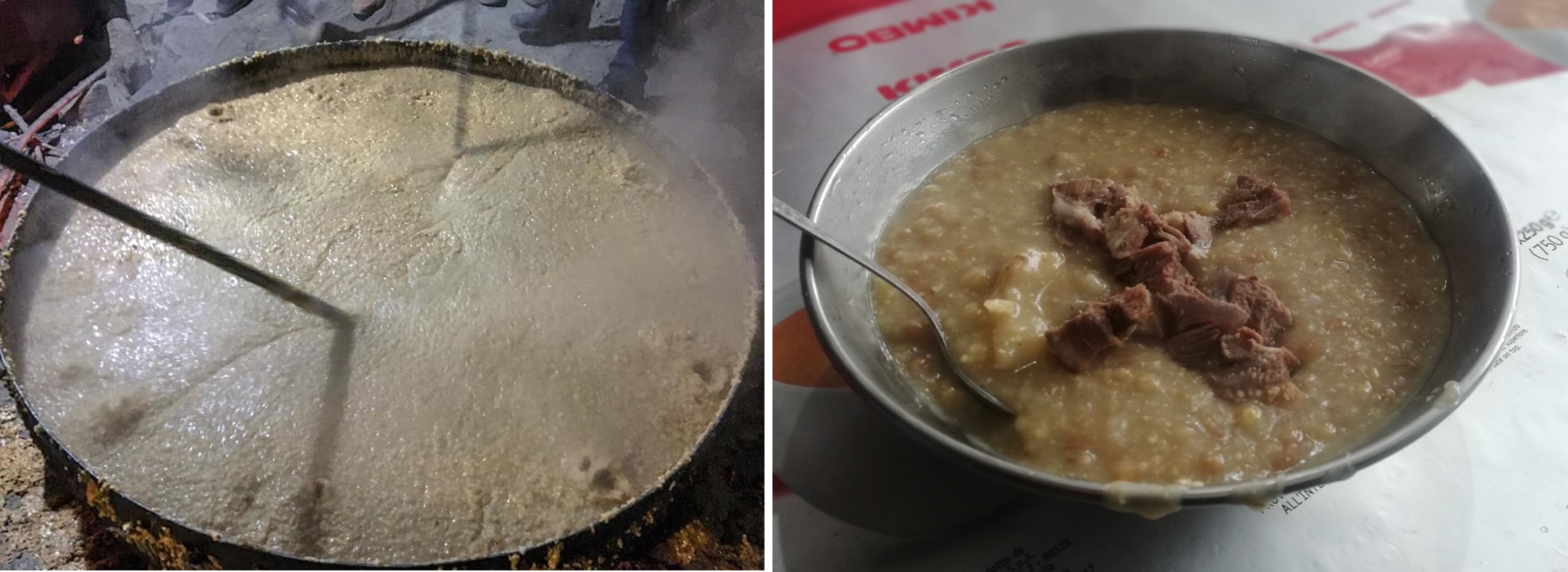
Harisa is a traditional dish that holds cultural significance in many regions, including Kashmir and parts of Pakistan. It is a slow-cooked stew made with meat and grains, typically enjoyed during special occasions and festivals. The dish has a rich history and is often associated with winter months due to its hearty and warming nature.
Ingredients:
Lean meat (traditionally chicken or mutton)
Whole wheat
Ghee (clarified butter)
Harisa, a slow-cooked dish from Hunza, blends whole wheat and lean meat with spices like cinnamon and cardamom. Simmered patiently, it transforms into a thick, porridge-like consistency crowned with ghee, creating a soul-soothing culinary masterpiece.
7) Buroshapik/Burusberikux
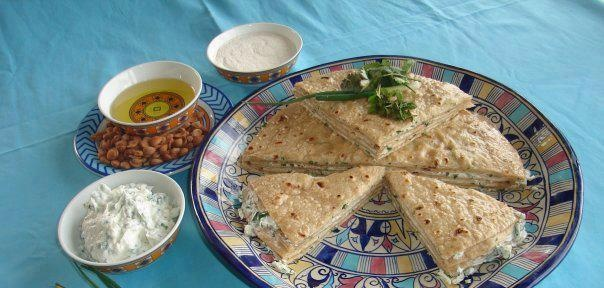
Buroshapik is a delightful dish from Hunza that might be a bit challenging to recreate at home but is certainly worth trying if you get the chance to experience it in Hunza! It happens to be one of my absolute favorites, and the unique preparation makes it a must-try in the region.
Ingredients:
- Wheat chapatis
- Apricot oil
- Green onions
- Burus (a mixture obtained by heating up lassi and separating the water, leaving behind the remaining substance)
This is how Burus Shapic Made.
- Prepare Wheat Chapatis: Begin by making simple wheat chapatis.
- Layering with Apricot Oil: Wet the chapatis with apricot oil, creating a layer.
- Add Mixture: Place another chapati layer and pour a mixture of green onions and burus. The burus is made by heating up lassi and separating the water, leaving behind the concentrated substance.
- Repeat Layering: Continue the layering process – chapati, apricot oil, mixture – until you achieve the desired thickness.
- Cut into Triangles: Once layered, cut the assembled chapatis into triangle-shaped pieces.
The result is a flavorful and unique dish that combines the earthiness of wheat chapatis, the richness of apricot oil, and the tanginess of the burus mixture. Enjoy this culinary delight that captures the essence of Hunza cuisine!
8) Diram Fitti
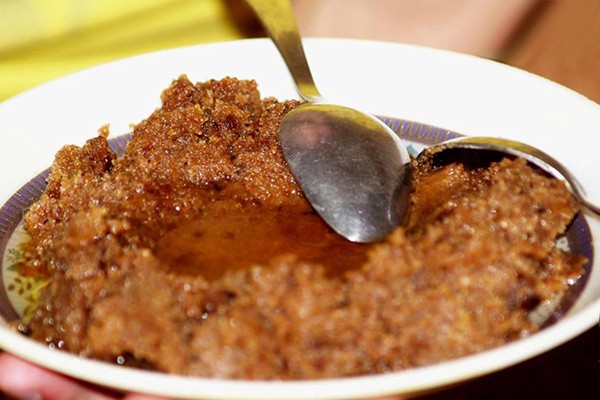
Diram Fitti is a delightful traditional dish from Hunza, known for its unique preparation using sprouted wheat flour, infusing the bread with a natural sweetness. The dish is a testament to the resourcefulness of the Hunza people, who have adapted their cuisine to the challenging mountain environment.
Ingredients:
- Sprouted wheat flour
- Butter
- Almond or apricot oil
Preparation:
- Sprouted Wheat Flour Dough:
- Begin by creating a dough using sprouted wheat flour. The sprouting process adds a distinct sweetness to the flour, enhancing the flavor of the bread.
- Kneading and Shaping:
- Knead the sprouted wheat flour into a soft and pliable dough. Shape it into a form suitable for baking.
- Baking:
- Bake the dough until it transforms into a delectable bread. The natural sweetness from the sprouted wheat flour will permeate the bread, creating a unique and enjoyable taste.
- Serving:
- Diram Fitti is typically served by generously adding butter, almond, or apricot oil. These additions not only enhance the flavor but also contribute to the richness of the dish.
Experience Diram Fitti: Imagine savoring a slice of freshly baked Diram Fitti – the sweet aroma of sprouted wheat, the softness of the bread, and the richness of butter or almond oil coming together in a harmonious blend. It’s not just a dish; it’s a culinary journey through the flavors of Hunza, where nature’s sweetness meets the ingenuity of local traditions.
This is how Diram Fitti is made Youtube Video Link.
9) Fitti Hunza Bread
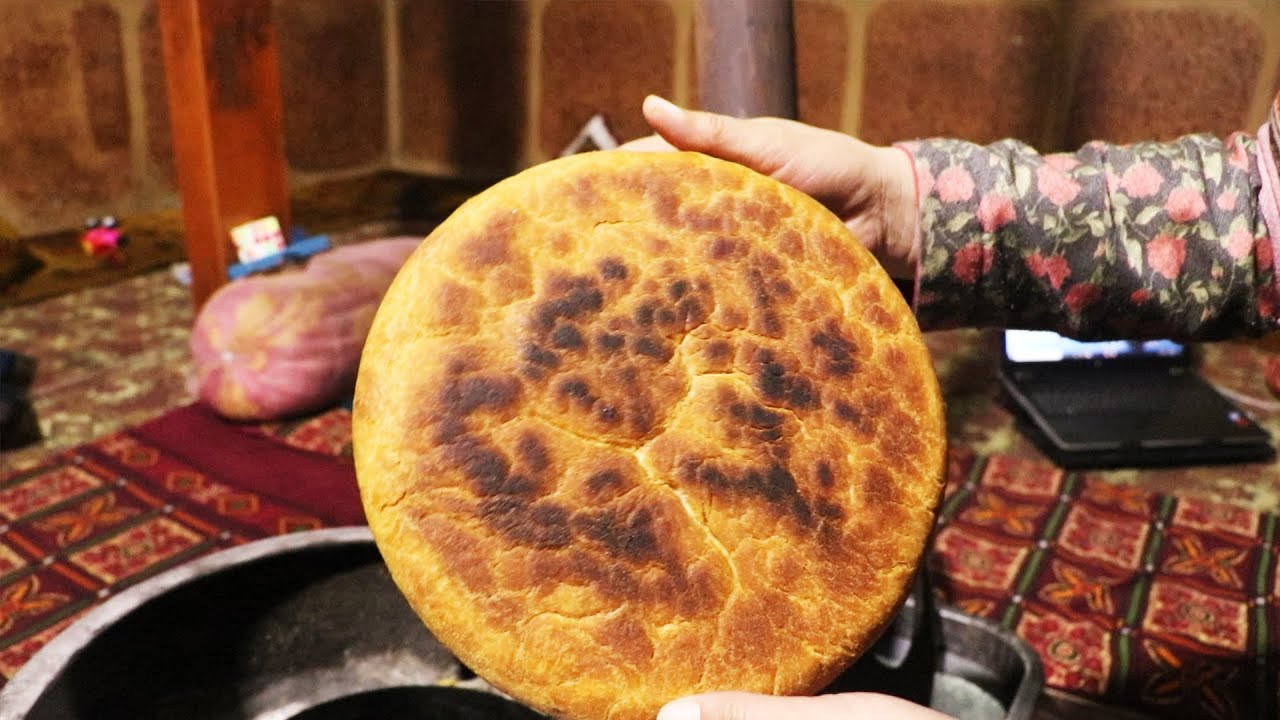
In Hunza, when the sun rises over the tall mountains, they don’t eat fancy stuff like city folks. Instead of parathas or bread, they have something called Fitti – kind of like their special bread. Making it is super easy:
Ingredients:
- Wheat flour
- Water
- Cooking oil
How to Make:
- Make Dough:
- Mix wheat flour with a bit of oil.
- Add water and knead it to make a dough.
- Shape and Cook:
- Take some dough and make flat, round pieces like pancakes.
- Now, you have two options: bake it in an oven or use a pan.
- Cooking in a Pan:
- Put the pan on burning wood in the fireplace.
- Cover it and let Fitti bake until it’s a nice golden color.
- Eat with Chai:
- Ta-da! Your Fitti is ready.
- Eat it warm with a cup of chai. It’s a simple breakfast that tastes like Hunza mornings.
In Hunza, they keep things simple, and Fitti is like their special mountain bread, bringing warmth to their breakfasts.
10) Hoee lo Garma
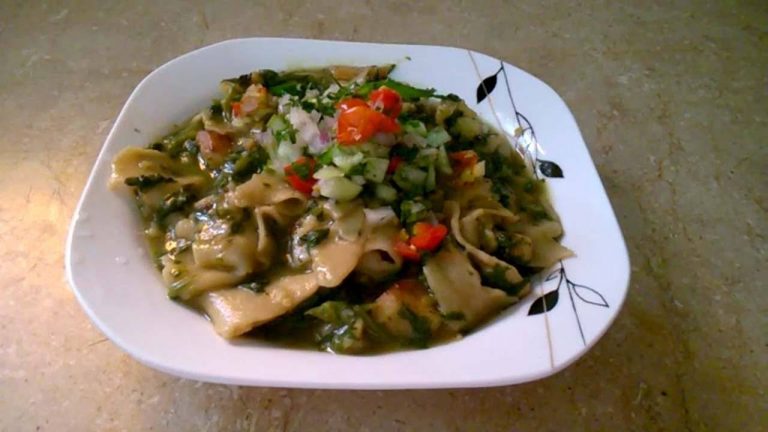
In burushiski Hoee means, Mustard Leaves which is used in process that’s why it is called Hoee lo Garma. Hoee lo Garma is a simple yet nourishing dish that features a dough crafted from organic flour, seamlessly blended with locally sourced spinach and potatoes (aloo). Its flavor profile often draws comparisons to the unexpectedly satisfying notes found in an Alfredo pasta.
11) Shero
Shero is another hunza desi bread which is hard as compared to Fitti which is use in breakfast as a bread. It is a unique hard bread from Hunza. To make it, locals mix water with wheat to form a dough. They shape a thick chapati and cook it briefly on a griddle. Then, it gets a special touch – it’s placed on hot ashes from a wood fireplace in Hunza, making it firm and flavorful. The result is a robust bread, distinct from the softer Fitti often enjoyed at breakfast.
Conclusion
The aforementioned traditional delicacies are all delectable and tempting, and both tourists and locals relish them. Try at least one or two of the preceding traditional dishes when you get the opportunity to visit Hunza Valley during a tour of the northern regions. Because you could regret passing up the chance to savor even one of the local cuisine’s distinctive and traditional dishes while on a tour to Hunza Valley.



Comment (0)